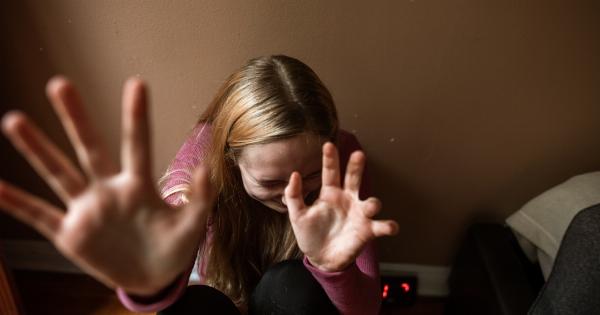Developmental issues, such as autism, ADHD, and learning disabilities, can significantly impact a person’s life and functioning. Early identification and diagnosis are crucial for individuals to receive appropriate support and intervention.
However, there exists a gender gap in the identification and recognition of these developmental issues, often leaving many undiagnosed and struggling to navigate their challenges.
Understanding the Gender Gap
Research has consistently shown a significant gender bias in the identification and diagnosis of developmental issues.
Boys are more likely to be diagnosed with conditions such as autism, ADHD, and dyslexia, while girls are frequently overlooked or misdiagnosed.
One reason for this gender gap is the diagnostic criteria themselves, which were historically based on male-centric research.
The symptoms and behaviors exhibited by boys with developmental issues became the norm, making it difficult to identify the same conditions in girls who may present differently. Girls often exhibit more subtle or atypical symptoms, which are easily misunderstood or attributed to other factors.
Additionally, societal expectations and gender stereotypes also contribute to the gender gap. Girls are often expected to be more socially competent, empathetic, and better at masking their difficulties.
This masking behavior, known as “camouflaging,” allows girls to blend in and compensate for their challenges, making it harder for professionals and educators to recognize their underlying issues.
Undiagnosed and the Consequences
Being undiagnosed can have severe consequences for individuals with developmental issues, regardless of their gender. Without a proper diagnosis, these individuals may struggle academically, socially, and emotionally.
They often face challenges in school, unable to access the necessary accommodations and support that can help them thrive.
Undiagnosed individuals may also experience mental health issues, such as anxiety and depression, as a result of feeling misunderstood, isolated, and struggling to fit in.
The lack of diagnosis and recognition can lead to self-doubt, low self-esteem, and a sense of constant frustration.
Furthermore, the gender gap in identifying developmental issues can have long-term implications for girls who, without a diagnosis, may continue to face difficulties as adults.
They may struggle with employment, relationships, and overall well-being due to unrecognized challenges.
Challenges Faced by Undiagnosed Individuals
Undiagnosed individuals face numerous challenges throughout their lives, exacerbated by the lack of awareness and understanding surrounding their specific needs. These challenges include:.
1. Lack of Support and Resources
Without a diagnosis, individuals have limited access to the support and resources available for those with recognized developmental issues.
This lack of support can significantly hinder their ability to succeed academically and function effectively in various settings.
2. Misunderstanding and Stigma
Undiagnosed individuals often face misunderstanding and stigma from others who do not recognize or understand their struggles. This can lead to feelings of isolation, self-doubt, and a sense of not fitting in.
3. Inadequate Treatment and Interventions
Without a proper diagnosis, individuals may receive inappropriate or ineffective treatments, further impeding their progress and well-being. The lack of targeted interventions can leave them feeling frustrated and unable to reach their full potential.
4. Delayed Identification and Missed Opportunities
Undiagnosed individuals miss out on early intervention opportunities that can significantly improve their outcomes. Delays in identification can result in missed chances to address and manage their challenges effectively.
Addressing the Gender Gap
Addressing the gender gap in identifying developmental issues requires a multi-faceted approach involving various stakeholders. Here are a few strategies to consider:.
1. Raising Awareness and Education
Increasing awareness among educators, healthcare professionals, and the general public about the gender gap in identifying developmental issues is crucial.
Training programs and educational interventions can help professionals recognize and understand the unique presentation of these issues in girls.
2. Revisiting Diagnostic Criteria
Diagnostic criteria need to reflect the diverse ways in which developmental issues manifest in different genders.
Research and updates to diagnostic manuals should include gender-specific presentations and symptoms to ensure accurate identification and diagnosis.
3. Providing Gender-Inclusive Assessment Tools
Developing and implementing assessment tools that are sensitive to gender differences can aid in identifying and diagnosing developmental issues in both boys and girls.
This includes recognizing and capturing the unique experiences and challenges faced by each gender.
4. Empowering and Amplifying Marginalized Voices
Listening to and centering the experiences of individuals who have been undiagnosed or misdiagnosed is crucial for understanding the gender gap and its consequences.
Their insights can inform research, policies, and strategies to close the gap and ensure equitable access to support.
Conclusion
The gender gap in identifying developmental issues has significant consequences for those who remain undiagnosed.
Recognizing and addressing this gap is essential in providing equal access to support, interventions, and opportunities for individuals of all genders. By raising awareness, revisiting diagnostic criteria, and empowering marginalized voices, we can work towards a more inclusive and equitable future for those living with developmental issues.































